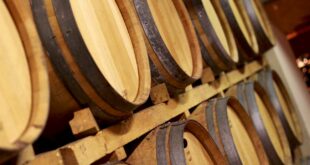[ad_1]
It may be hard to imagine, considering Napa’s moniker as the preeminent luxury wine region in the United States, but it wasn’t that long ago that the valley was a small agricultural area populated with bootstrapping farmers.
Today, the valley is renowned for its premium wines and grand estates. Four million tourists visit annually. While many visit the gleaming tasting rooms and cellars of corporate-owned wine brands, plenty of small family wineries still make up the fabric of the valley. In 2015, 68 percent of Napa wineries produced fewer than 20,000 cases per year.
But there is a growing concern that the county is not supporting its biggest economic draw, especially when it comes to small wineries. In 1968, vintners and local officials teamed up to create the Napa Agriculture Preserve, the first preserve of its kind in the nation. The idea was that the best way to protect the land from excess development was to zone it for farming. But a growing number of Napa residents don’t see grapegrowing as the best way to protect the land and wineries. Some Napa residents complain that wineries have become more like tourist attractions and event spaces than small farms. The county already has some of the country’s most complex rules for gaining approval, and local groups are increasingly fighting those approvals.
Multiple parties have filed lawsuits over use permits and water rights. Many small winery owners are grumbling of grievances with the county government, including approvals for new construction and wastewater treatment upgrades. There’s also a federal investigation over possible corruption in the permitting process.
Some worry that this will only make the Valley less attractive to small wineries. “The county’s approach will further stratify the market in favor of larger entities and push smaller wineries out of business,” said Hoopes Vineyard owner Lindsey Hoopes, who has become an unexpected poster child for the simmering frustrations within the valley.
[article-img-container][src=2024-04/ns_napa-battle-hoopes-041624_1600.jpg] [credit= (Courtesy Hoopes Vineyard)] [alt= Lindsey Hoopes at her Napa winery.][end: article-img-container]After Napa County officials slapped Hoopes with citations for allegedly conducting tastings without a proper permit, they filed a lawsuit against her in 2022. Hoopes, adamant that she was within her rights, has filed a countersuit, claiming officials abused their regulatory power.
Hayes Drumwright, founder of Vida Valiente and Memento Mori wineries, has been in a five-year battle with the county over building a winery home for Vida Valiente in rural St. Helena. Drumwright says he’s fulfilled all the required criteria, abided by all the rules and passed every necessary environmental survey, traffic study and more. He’s even received a thumbs-up from a public works official and fire marshal. Yet in a December 2023 hearing, he was still not approved to begin construction. “I know other wineries are going through the same thing,” said Drumwright. “Save me my time and money if following these rules doesn’t matter.”
Not far from where Drumwright aims to build, Jayson Woodbridge, founder and owner of Hundred Acre Wine Group, is also taking action against the county. Woodbridge has filed two lawsuits against the county over officials denying him permits for wells and to replant trees burned down in 2020 wildfires.
These are just a few examples of battles being fought in the public eye. Behind the scenes, the FBI has subpoenaed records from several wineries; environmental groups claim there’s evidence that local officials improperly approved certain projects.
“Some individuals voice frustration over what they perceive as an excessive number of wineries and a lack of regulations, while others contend that there are already too many regulations…
[ad_2]Source : https://www.winespectator.com/articles/napa-valley-versus-napa-valley



